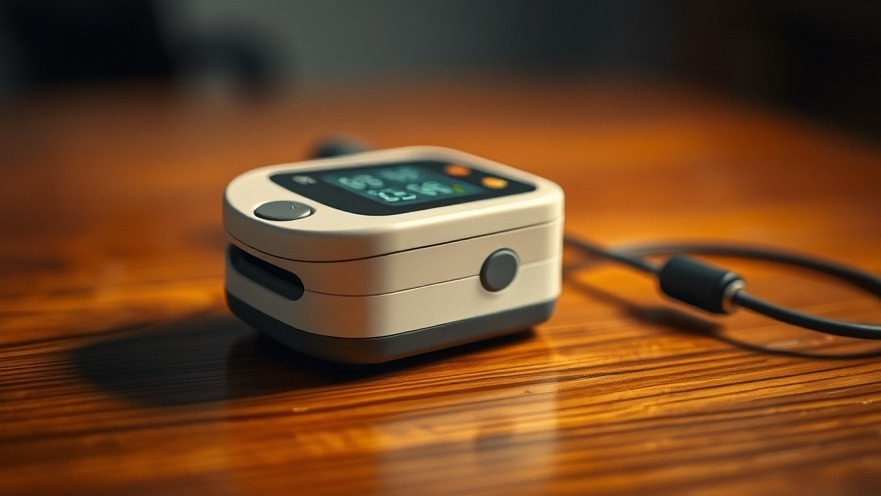
The Hidden Bias in Pulse Oximeter Readings
The findings from a recent study presented at the American College of Cardiology's Annual Scientific Session shine a light on a crucial yet often overlooked issue in medical diagnostics: the performance of pulse oximeters varies significantly based on skin pigmentation. Pulse oximeters, vital tools for measuring blood oxygen saturation, have been a first line of assessment in both routine and emergency settings, particularly highlighted during the COVID-19 pandemic.
Understanding the Study's Implications
Conducted on critically ill patients, the study is the largest of its kind, demonstrating that the bias in pulse oximeter estimates could lead to dangerous misdiagnoses. The research emphasized that these devices might incorrectly assess blood oxygen levels, thus overestimating health status in specific racial groups. It's a reminder that technology, while beneficial, isn't infallible. Despite the average bias being negative across all groups, darker-skinned patients experienced relatively less negative bias.
The Technology Behind Pulse Oximeters
How do pulse oximeters work? These devices use light sensors that measure how much light is absorbed by hemoglobin in the blood. By analyzing the absorption patterns, healthcare providers can determine a patient’s blood oxygen saturation. However, the presence of melanin, which affects light absorption, may lead to substantial inaccuracies, especially in individuals with more pigment. Understanding this technology is essential for practitioners who rely on accurate readings for optimal patient care.
Consequences of Oximeter Bias for Patient Care
This bias in readings can have profound consequences on clinical decision-making. For example, when pulse oximeters fail to detect dangerously low oxygen levels in patients with darker skin, the immediate repercussions could be misguided triage or treatment delays. Given that hospital admissions, supplemental oxygen administration, and advanced treatments for COVID-19 hinge on accurate readings, the potential for harm grows significantly. Practitioners need to be aware of these biases to safeguard patient health.
Future Predictions: Reevaluating Diagnostic Standards
With the rising awareness of these disparities, one can predict a shift towards more inclusive medical devices that take into account the effects of skin pigmentation. Manufacturers may be motivated to innovate pulse oximeter technology to ensure accurate readings across all skin tones. Espousing diversity within clinical trials and device testing will be crucial in the efforts to eliminate racial bias in medical tools and promote equitable health for all patients.
Broader Implications on Healthcare Technology
This revelation doesn’t just affect pulse oximeters; it reflects deeper systemic challenges within healthcare technology. The need for technology solutions that cater explicitly to diverse populations has never been clearer. As healthcare continues to evolve, practitioners and tech developers must collaborate to produce tools that are both innovative and inclusive, ensuring all patients receive the best possible care.
Actionable Insights for Practitioners
As a healthcare provider, staying informed about how technology can affect patient outcomes is essential. Consider training your staff to recognize the limitations of pulse oximeters, especially in populations that may be disproportionately affected. Additionally, advocate for further research and discussions within your network on device standards and user best practices that prioritize patient safety.
In conclusion, the variance in pulse oximeter performance based on skin pigment underscores the importance of vigilance and adaptability in patient assessment. By proactively addressing these disparities, healthcare practitioners can enhance their practices and improve health outcomes for all individuals.
 Add Row
Add Row  Add
Add 






Write A Comment